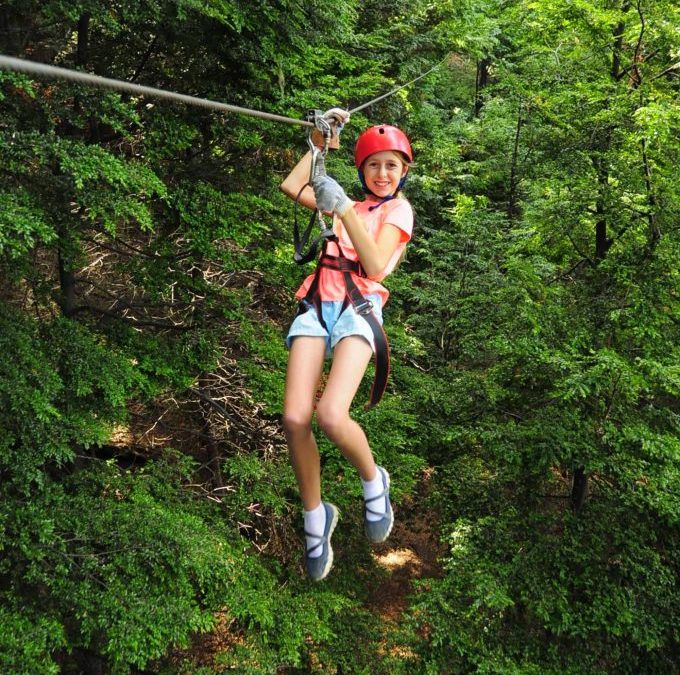
by Maile Bowles | Jan 21, 2018 | Maile, South America
I love zip lining! At my home in St. George, we have a zip line that we take down most of the year because it goes straight through our backyard. Whenever I get the option to zip line on vacation, I take it. Zip lining is the best way to see a forest in my opinion. To get to the zip lining company, we had to drive around a beautiful lake. They packed us in like sardines into a jeep and took off up the mountain driving way to fast. I didn’t like the jeep because I hit my head every time we went over a rock. My mom didn’t zip line because she is afraid of heights. Instead, she took some nice videos from the ground. I felt like I was flying through the beauty of nature. On one of the zip lines, I got hit in the face, arms, and legs with tree branches.
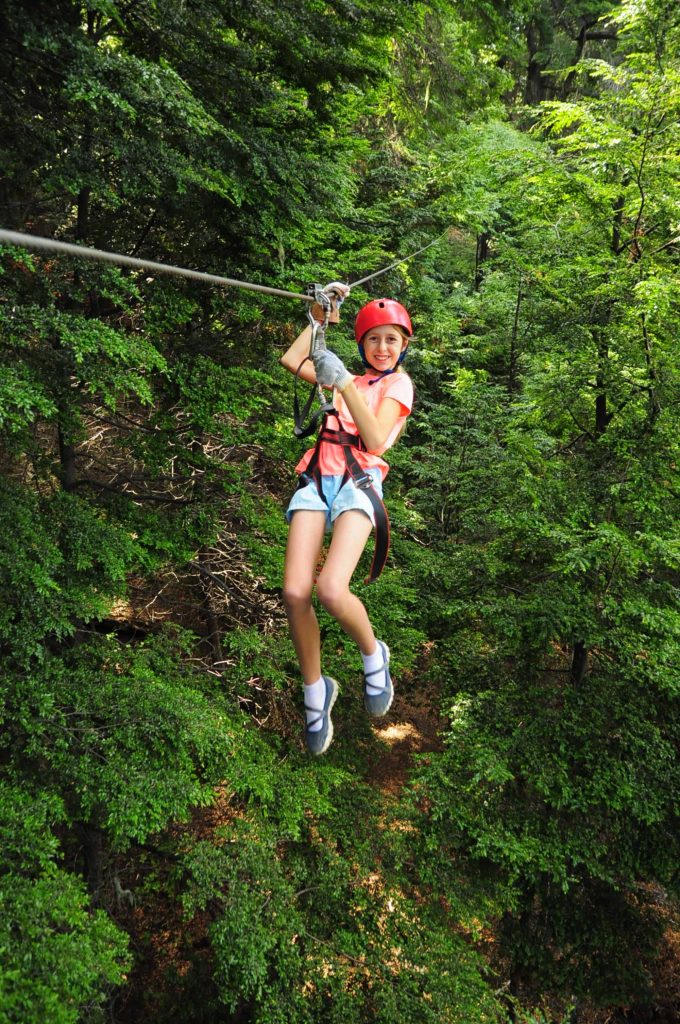
Flying through the trees in Bariloche.
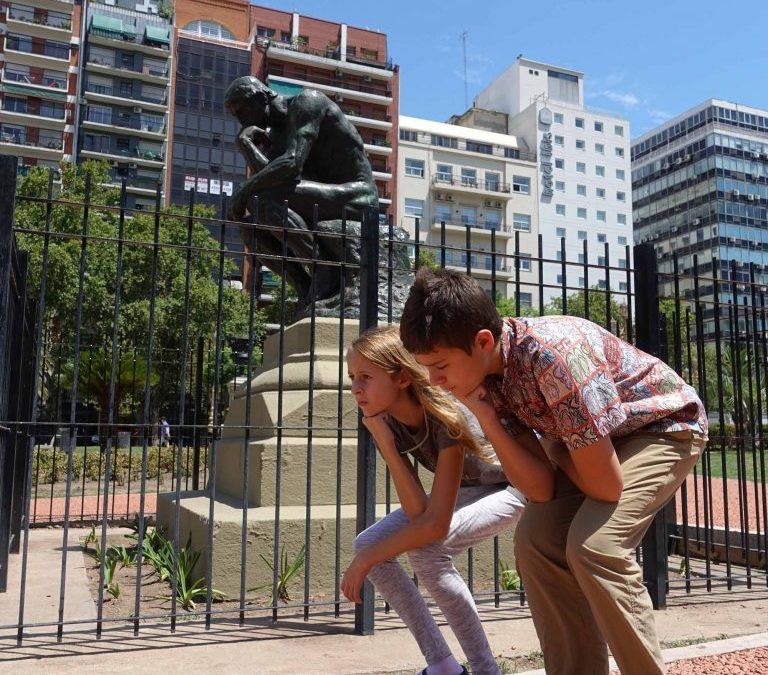
by Jason Bowles | Jan 17, 2018 | Jason, South America
It took some explaining to appreciate the moniker “Paris of the south.” In general, big cities can be rather generic. Paris makes my short list of exceptions, though. I was excited to visit, and hoping that BA would join Paris, Istanbul, Bangkok, New York, and the few other big cities that have enough unique character to make them stand out.
At first, it seemed a very poor comparison. Leaving the Aeroparque Jorge Newbery, we took a taxi into town. The domestic airport sits on the bank of Buenos Aires’ “river”, the Rio de la Plata, which isn’t really a river. Over 200 kilometers wide, the Rio de la Plata might be better categorized as an estuary (or possibly a gulf) that happens to meet the confluence of the Parana and Uruguay rivers. There is a fair amount of commercial activity along the Rio, and looking north all you see is the horizon; Uruguay is lost in the distance. Not nearly as charming as the banks of the Seine.
When we reached our apartment building in Recoleta, the streets started to look a bit more continental. Closer to the city center, wide avenues and European architecture were even more common. We also visited a city park with a large Rose Garden designed by a French landscape architect that did have a Parisienne feel. When pointed out, the similarities are there—certainly more so than any of the other Latin American capitals I have visited—but I certainly would not have made the comparison myself.
OK, so it’s not Paris. What is there to see and do in Buenos Aires? The most popular tourist attraction is the Recoleta Cemetery, the highest rent district in the city. In a relatively small space (about a city block), the city’s elite have been building monuments to themselves for centuries. Within and under these monuments are the crypts containing generations of their progeny, as many as six levels down. Most of the names were lost on us, but we did visit the tombs of Domingo Sarmiento and Eva Peron. The kids were not impressed.
The Rose Garden was interesting as it contained monuments to the revolutionary leaders that helped liberate the Americas from their European masters: Jose de San Martin (the liberator of Argentina), Simon Bolivar (who liberated the northern half of the continent), Jose Marti (who we learned about when visiting Cuba not long ago), and even George Washington. No monument to Che Guevara, but we did visit the University where he studied medicine.
Two highlights from BA: a Tango show, and discovering closed-door dining. Certainly, one of the Tango-capitals of the world, we had to go to a Tango show while in Buenos Aires. We were a little apprehensive as the show was not well attended (there were more people on stage than in the audience), but the show was fantastic! The dancing and live music were outstanding and included dances with drums, whips, and the Argentine equivalent of Hawaiian poi balls. After the show, we learned that the accordion player, Carlos Buono, was a virtuoso and was well-known around the world.
Closed-door dining was another highlight. Apparently, this exists around the world, but we had never heard of it before. We read about Casa Saltshaker in Lonely Planet and it came highly recommended. The restaurant is in the home of the proprietors, and only after you secure a reservation do you learn where that is. We arrived at 9 pm and had drinks with 8 others before joining them around the dining table in the chef’s home. We enjoyed great food throughout our stay in BA, but this 5-course meal was, without question, the best. The experience, also, was quite unique, and one that we look forward to repeating.

One of only 3 copies of Rodin’s The Thinker cast from the original mold.

Pope Francis used to give mass here before he was elevated.
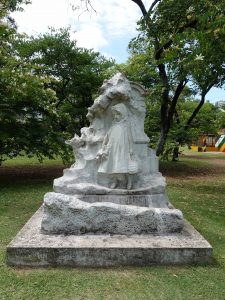
The only statue of Little Red Riding Hood.
by Alex Bowles | Jan 15, 2018 | Alex, South America
We just landed in Buenos Aires, the capital of Argentina or otherwise known as the Paris of the South
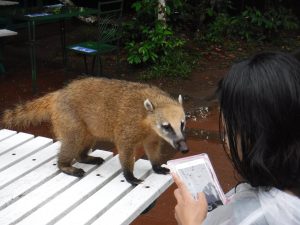
by Alex Bowles | Jan 14, 2018 | Alex, South America
Iguassu falls is considered one of the seven natural wonders of the world. Iguassu Falls isn’t just one waterfall, but a collection of over three hundred waterfalls each pouring huge amounts of water onto the rocks below. The cascade’s impact creates huge clouds of mist that can raise as high as 500 feet into the air, moving and breathing like a living creature. To get to the falls you have to walk on winding paths which you share with numerous animals. The most common inhabitant of the park is the Coati. They look like a raccoon crossed with a badger with a longer tail, a mostly tan and black color and a long snout. They are as common as squirrels in the United States. Our first morning at our hotel we saw one approach us and it didn’t mind us. We saw a whole family of them run across the street. After a few minutes, there were about 40 – 50 coatis in the area about the same size of a classroom running and climbing palm trees. My favorite thing to do on the Brazil side was Macuco boat tours. The boat tours took us up the lower Iguassu river up to the Three Musketeers Waterfalls and into the downpour, drenching everyone. Before we boarded the boat they passed out rain ponchos and I didn’t take one but my family did and found out that they did not work too well. We were given a small hint on how wet we would be when the boat driver stopped the boat for a couple minutes to put on a dry suit. Both countries national parks have boat tours that take you into the falls but the Brazilian tour is more frequent and organized. On the Brazil side located inside the park is the Belmont hotel. We stayed in the Belmont and could walk across the street any time and see the falls. We were warned not to walk around at night because there were Jaguars and Pumas that stalk the trails at night. On the Argentine side is the Melia hotel. Many of the rooms, like ours, have a view of the Devils Throat, the biggest waterfall in Iguazu Falls. Like the Belmont, you can walk to the park from the hotel. The trails take you to the many winding paths that give you excellent views of the numerous waterfalls. In the food court at lunch time, monkeys and coatis looking for food climb tables and attempt to steal anything edible.

Trying to steal lunch.
The Argentine side has a trail that will take you to an elevated metal catwalk that extends for more than a kilometer across the Iguassu River to the Devils Throat, or as it is called in Argentina, Garganta del Diablo. To get to the trail you have to ride one of the slowest trains in existence. It was so slow I thought I could walk faster. It rained for almost the entire day except when we were inside eating lunch.
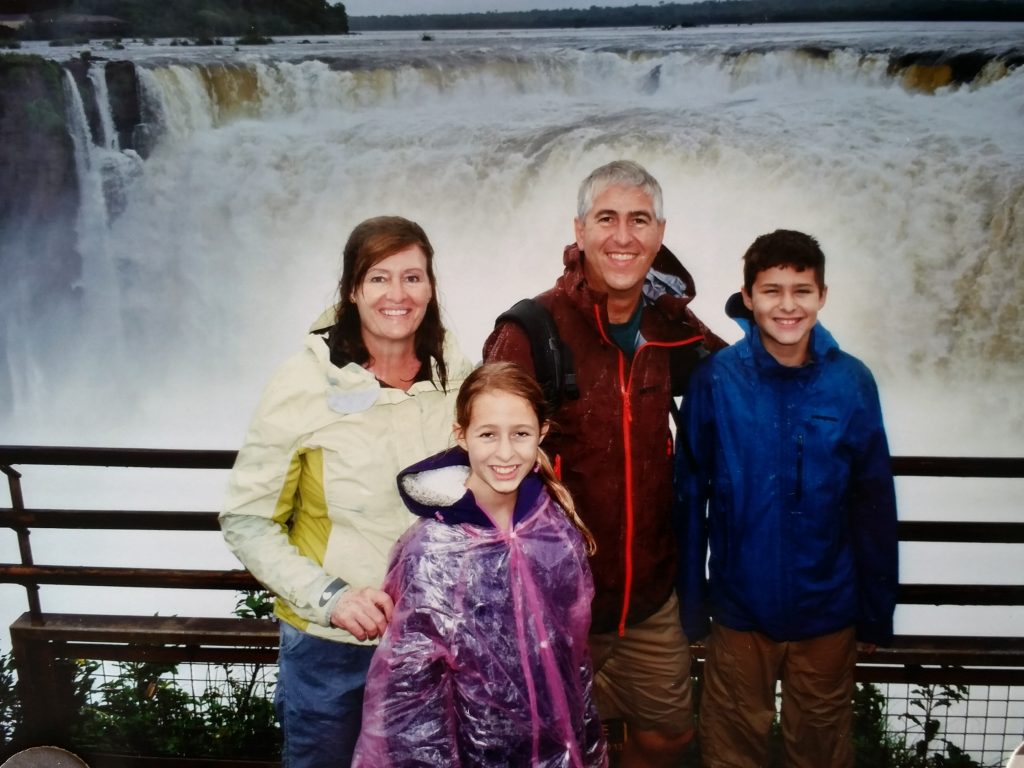
Garganta del Diablo
by Jason Bowles | Jan 14, 2018 | Jason, South America
Six weeks in South America–where to start? Patagonia in general and Torres del Paine, in particular, have been calling for decades. Finally, we are going to make it happen. Arranging enough time off of work and pulling the kids out of school took a while to organize, but finally, we are on our way. Obviously, we can’t see everything, so how to decide? Fortunately, this isn’t our first time in South America. Machu Picchu, Titicaca, Galapagos, Amazon . . . We have seen a few of the highlights already. Iguassu seemed like a logical place for us to start. Generally regarded as one of the seven natural wonders of the world, Iguassu falls has also been on my “must see” list. As the falls straddle the border of Brazil and Argentina, it also seemed logical to start in Brazil and see both sides as we worked our way south into Argentina. As it turns out, this was a great way to go.
There is only one hotel within the park on each side of the border, and both are very convenient to the falls. We started in Brazil, staying at the Belmond Hotel Das Cataratas–fantastic! Beautiful building, great facilities, friendly staff. Couldn’t ask for a better way to start a vacation. The hotel only has a partial view of some of the falls, but right across the street is the trail along the river and we had free access to the falls. Early morning walks with a handful of others was a pleasant treat. Within a few hours, bus-loads of tourists were arriving from the park gate, 10 kilometers away.
The trail on the Brazilian side offers spectacular panoramic views of the falls, the majority of which are on the Argentine side of the Iguassu river. An elevated boardwalk takes you out over the river in the midportion of the Devil’s Throat, the largest of over 350 falls that form as the Iguassu river plunges for nearly 2 kilometers. From this platform you hear and feel the roar of the cascades, you are quickly drenched from the spray that blasts out from the bottom of the fall and rises almost 500 feet into the air. From the Brazilian side, you can see walkways along the tops of some of the falls in Argentina. It seemed that walking along the top of a waterfall, even one as impressive a those at Iguassu, couldn’t possibly compare to the view offered from the Brazilian side.
Traveling to the other side, though, it doesn’t take long to realize that to truly see the falls you need to see both sides. Walking the several kilometers of elevated walkways on the Argentine side is a totally different experience. You don’t appreciate from the Brazilian side that the Argentine trails are in the river. Just above the falls, the Iguassu river is nearly a mile wide so it is quite a trek out on the walkway that leads to the Garganta del Diablo–the Devil’s Throat. The walkway ends at a perch looking down into the largest fall at Iguassu. Even if it wouldn’t have been raining we still would have been drenched. The other two trail circuits were also spectacular and offered a unique perspective from the top and midportions of the Argentine falls. Very different, but both offer unique opportunities to see and enjoy what has to be the most spectacular waterfall in the world.
On the Argentine side, what used to be the Sheraton has recently changed names and is now the Melia Iguazu. The hotel itself is not nearly as nice as the Belmond, but our rooms had great views of the falls. It also offered easy access to the trail network around the falls and saved us traveling back-and-forth across the border to see the falls, and later to catch our flight from the Argentine side on to Buenos Aires.
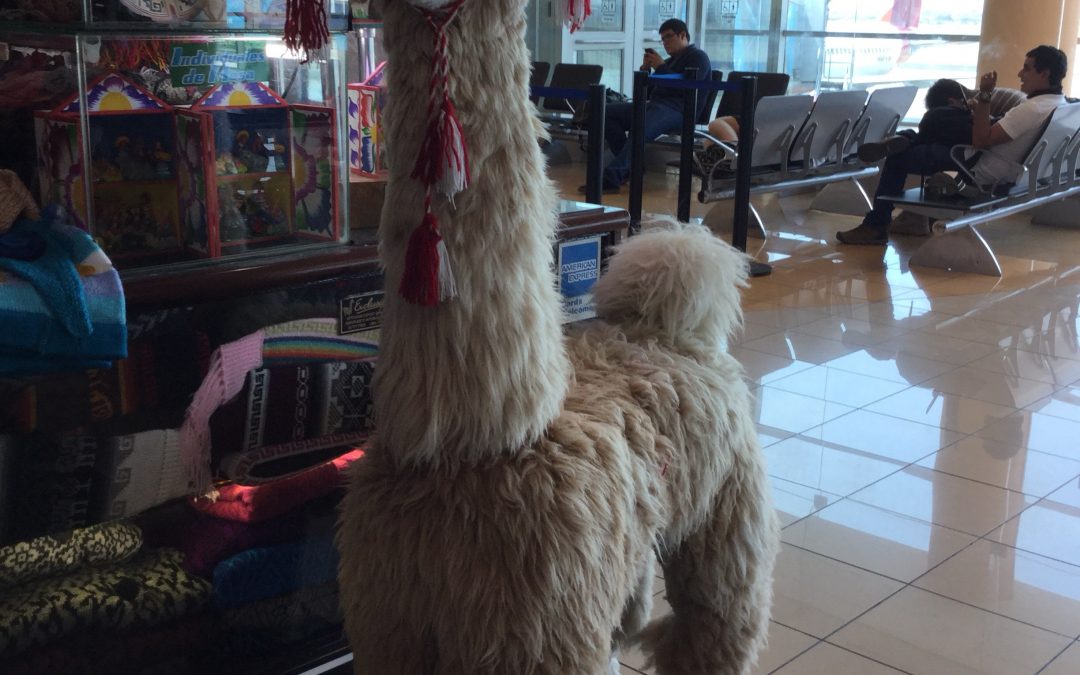
by Maile Bowles | Jan 11, 2018 | Maile, South America
Walking through the airport in Peru, and the first thing I see is a camel statue, bigger than me. As we continue to walk through, I see a giant cow head. After looking at the picture, I noticed that the cow was smiling. Then Alex tells me of a wondrous llama. He showed me a gift shop with the softest plush I have ever seen. It was a llama plush made with real llama fur. As we continued walking I see a big llama plush. My

 dad said I could have a llama plush if I come next year and hike Machu Picchu. We are about to get on a plane to Iguazu Falls, Brazil.
dad said I could have a llama plush if I come next year and hike Machu Picchu. We are about to get on a plane to Iguazu Falls, Brazil.













 dad said I could have a llama plush if I come next year and hike Machu Picchu. We are about to get on a plane to Iguazu Falls, Brazil.
dad said I could have a llama plush if I come next year and hike Machu Picchu. We are about to get on a plane to Iguazu Falls, Brazil.